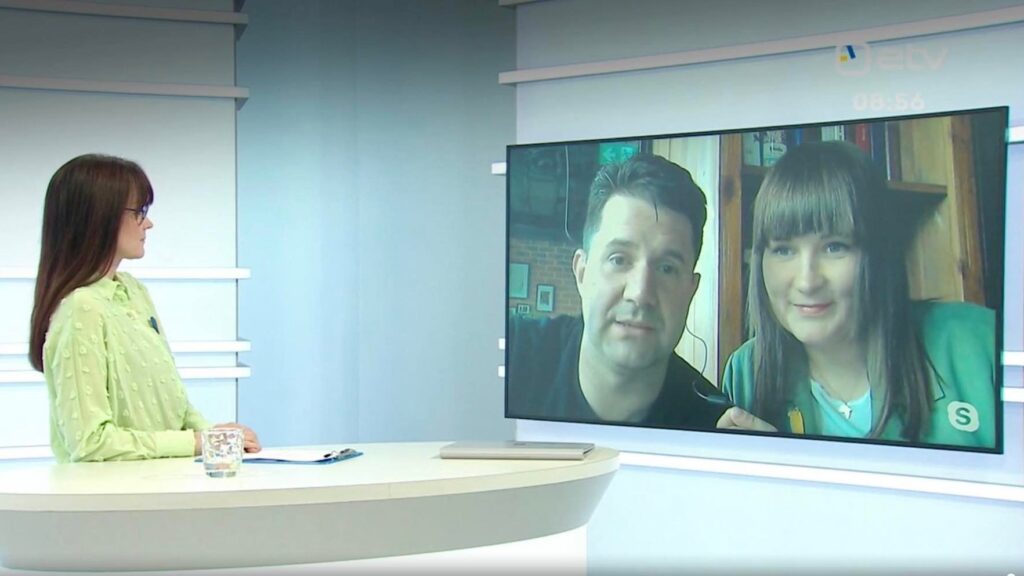Estonian entrepreneur and volunteer Toomas Roolaid and Estonian World writer Reelika Virunurm share their personal experience of driving across Europe and delivering medicine, food and needed supplies to Ukraine.
I was actually supposed to be in Odessa that day. Springtime by the Black Sea, magnificent architecture and learning more about the complex and colourful history of this harbour city was what I had in mind when I confirmed my travel plans months ago. Instead, I was standing at one of the Polish-Ukrainian border crossings and watched refugees arriving from the Ukrainian side. I was chatting with a sharpshooter from Germany who wanted to join and help the Ukrainian military with his skills.
Ironically, 24 February, when Russia attacked Ukraine, was also the Estonian Independence Day. Since then, I have been mostly at a loss for words – and surprised by the ignorance and naïveté that many Western European countries still harbour. As one of my Ukrainian friends recently put it, “Russia has never been our brother nation, but the Baltic states, Poland and Georgia definitely are!” Estonia has already given more military assistance – worth over €200 million – to Ukraine than Germany, despite having an economy 65 times smaller.
When one of my friends, a member of the Estonian Volunteer Rescue Association, Toomas Roolaid, managed to raise a huge amount in donations and was planning to drive straight to Ukraine with a car full of supplies, I volunteered (read: begged) to be taken along. With all his personal contacts and knowledge of Ukraine, Toomas had posted his appeal to help Ukrainians directly and within a few days, countless people had sent their help, which was enough to be able to put together a car full of needed medical supplies and other humanitarian help and start the long journey from Tallinn to the Polish-Ukrainian border, via Warsaw.
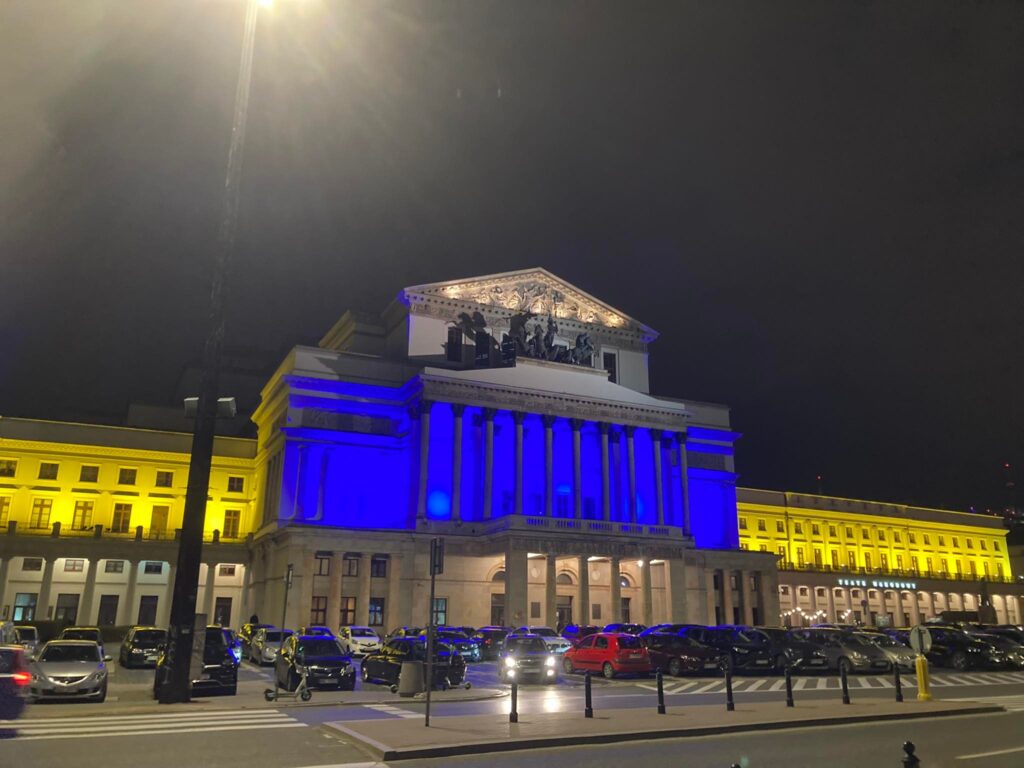
“Helping Ukraine” are the magic words to open people’s hearts
Just like in Estonia, there are Ukrainian flags everywhere in Poland; the shop windows are covered with unwavering support and messages to Ukraine. During the coming days I got to know the kindness of the Polish people even more closely and realised that “helping Ukraine” are the magic words in 2022 that opens the hearts of people, no matter the language barriers.
With the help of many other people, there have now already been two humanitarian “missions” by Toomas – but also by other Estonians who are helping Ukraine directly, without any institutional support.
Our experience differs from the political disputes and discussions between the countries and governments on whether to send military aid to Ukraine, and in what quantities. During our two trips, we saw a number of ordinary people from across Europe – as well as from the US and Canada – helping Ukraine.
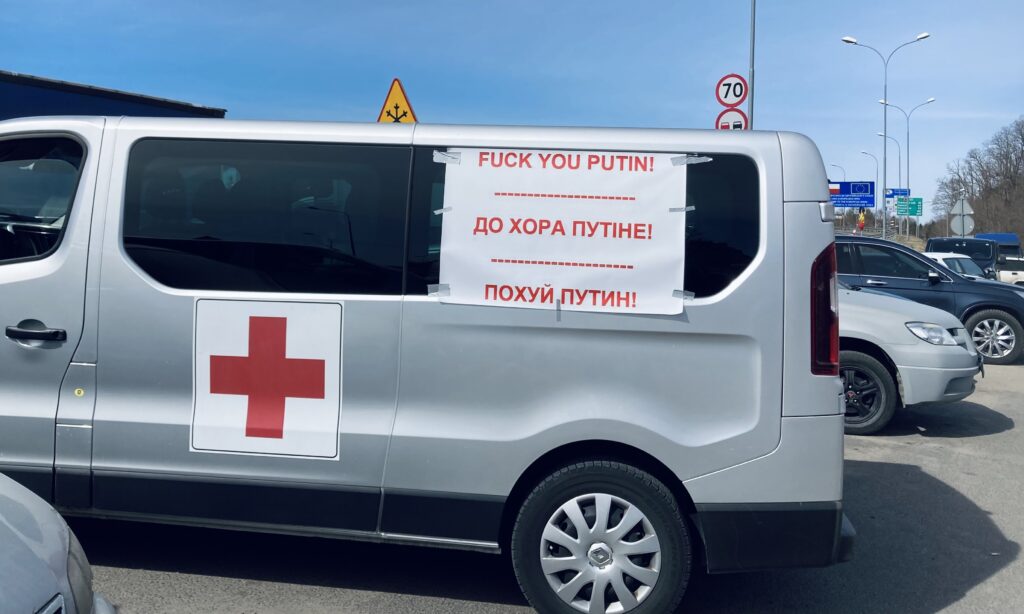
In every Polish fueling station, we came across to some friendly Lithuanians, driving SUVs full of medical aid, food and other supplies to the Ukrainian border. A parking lot, used for accommodation, was full of vans from France – the drivers looking worn out and tired from the long drive.
In Poland, we met Estonian entrepreneur Ragnar Sass, a cofounder of Pipedrive, one of the country’s unicorns, who had organised a supply of 14 second-hand SUVs to be delivered to the Ukrainian military. The 2AM meeting of Estonians at a Polish gas station was somewhat dramatical – the station was suddenly full of SUVs decorated with Ukrainian and Estonian flags and the mood was almost festive, albeit very tired.
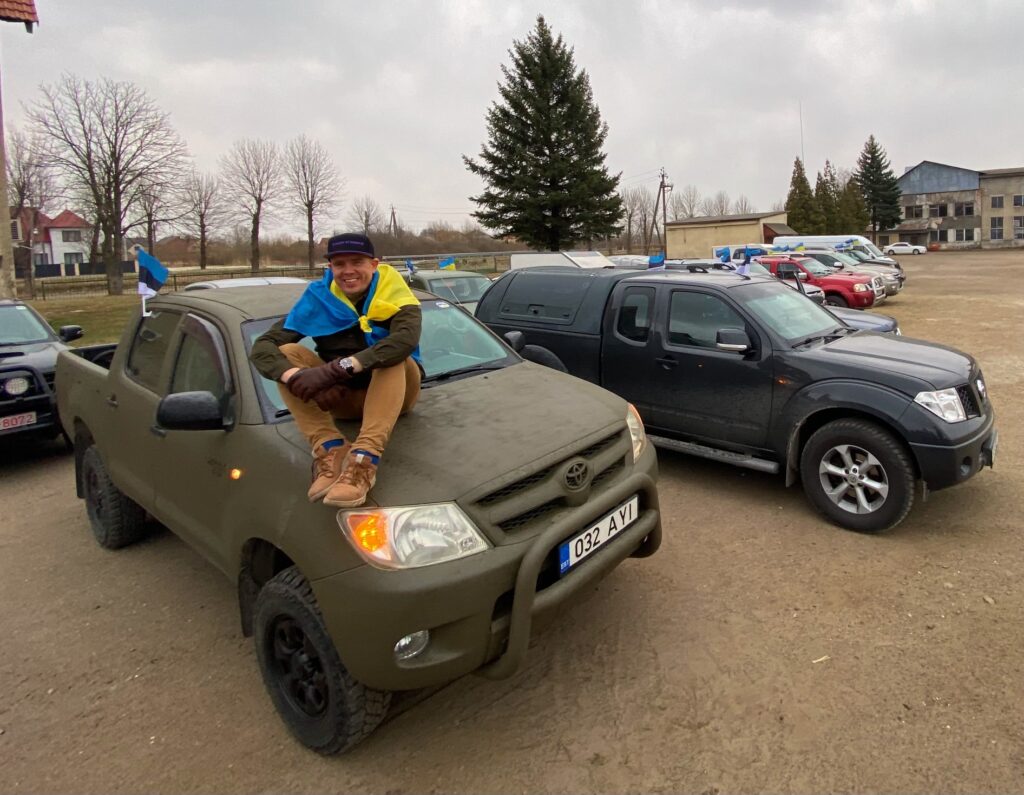
Moved by the people’s kindness
“The Lithuanians initiated this – they sent a hundred cars right away when the war started, and then the Latvians came along. So, I wondered, why we don’t do it in Estonia, too,” Sass told us. The idea caught up and many Estonian companies joined with the initiative; a lot of people volunteered as drivers. It took Sass’s crew a total of 33 hours to reach Lviv from Tallinn – in co-operation, Toomas and I managed to fill another trailer with food that was delivered by their convoy to Ukraine.
Sass, who also runs a coworking space in Kyiv and has worked with Ukrainians for years, believes everyone underestimated Ukraine as a country. “I’ve seen what people in Ukraine can do. There is a lot of confusion here, as we can see around us. But there is also a lot of talent, a lot of brave people.”
In addition to the aid we brought along from Estonia, Toomas and I committed ourselves to purchasing more necessary supplies in Poland and sending it to Ukraine.
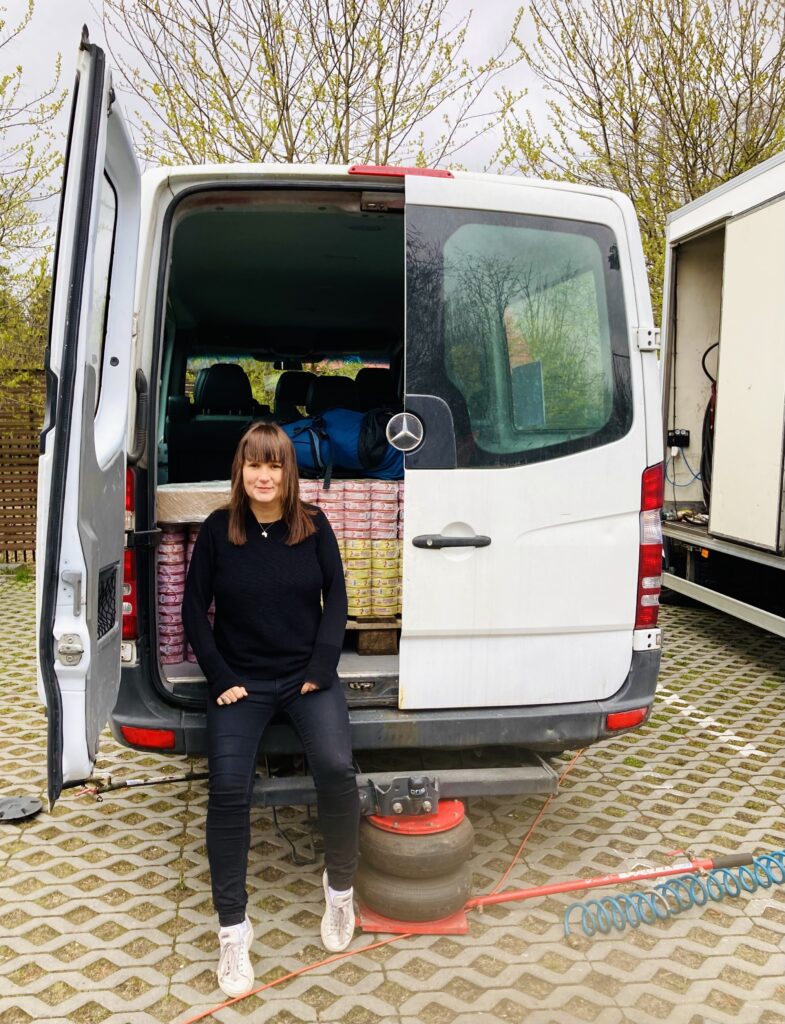
Personally, I have never been more moved by people’s kindness than during these days volunteering on the Polish side of the border, while Toomas was coordinating everything directly from the Ukrainian side.
For example, during our first day in the Polish city of Lublin, it quickly became clear that most rental cars and vans had already been booked. Somehow, despite the language barrier, and using body language for communication, a local gentleman called Tarek simply gave us his car to use for the day.
Or when during quick coffee breaks, the coffee shop owners called their friends for more contacts and advised me about all local matters. Then there were men from Panevėžys, Lithuania, who had driven to the border crossing with their catering van to offer free warm food to everyone who might need it.
Several vans full of food and medicine
My personal record was spending two and half hours and almost five kilometres (three miles) trotting around in a cash and carry store to buy an SUV full of nourishments – with a heavy focus on canned foods, after which I dubbed my rental car “the canmobile”. I was also armed with a Polish-language list of necessary medical supplies that opened the doors of a lot of pharmacies and enlisted the help of many kind-hearted pharmacists.
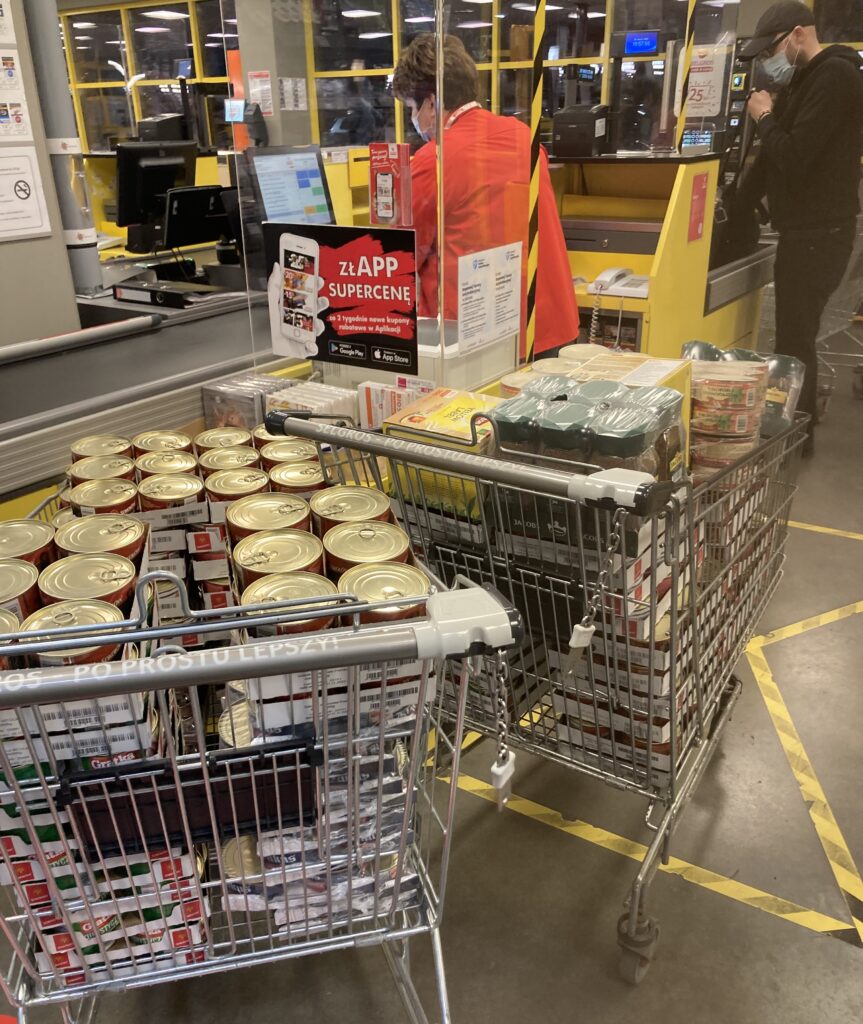
Meanwhile, Toomas was very busy coordinating everything with the Ukrainians across the border, making sure the deliveries were either stored or received where they needed to be, and sending me the necessary lists and “missions” to fulfil – including finding military pants for three very tall Ukrainian territorial defence fighters that created somewhat of a commotion at the local military store.
While the trucks of large aid organisations might be stuck at the border for half a day or more – with all the bureaucracy involved – individual cars with European licence plates can generally go quickly back and forth across the border, hence providing a more dynamic way of helping Ukraine.
All in all, we managed to send several cars, vans and trailers full of much-needed food and medicine directly to the Ivano-Frankivsk humanitarian aid warehouse, where it can be distributed further to cut-off regions (Dnipro and Mariupol, for example) and straight to the people in need. Even with all the volunteer help from across the border, these deliveries require an insane amount of effort by a lot of people in Ukraine as well – not just distributing food and sorting aid, but also delivering it through several intermediaries.
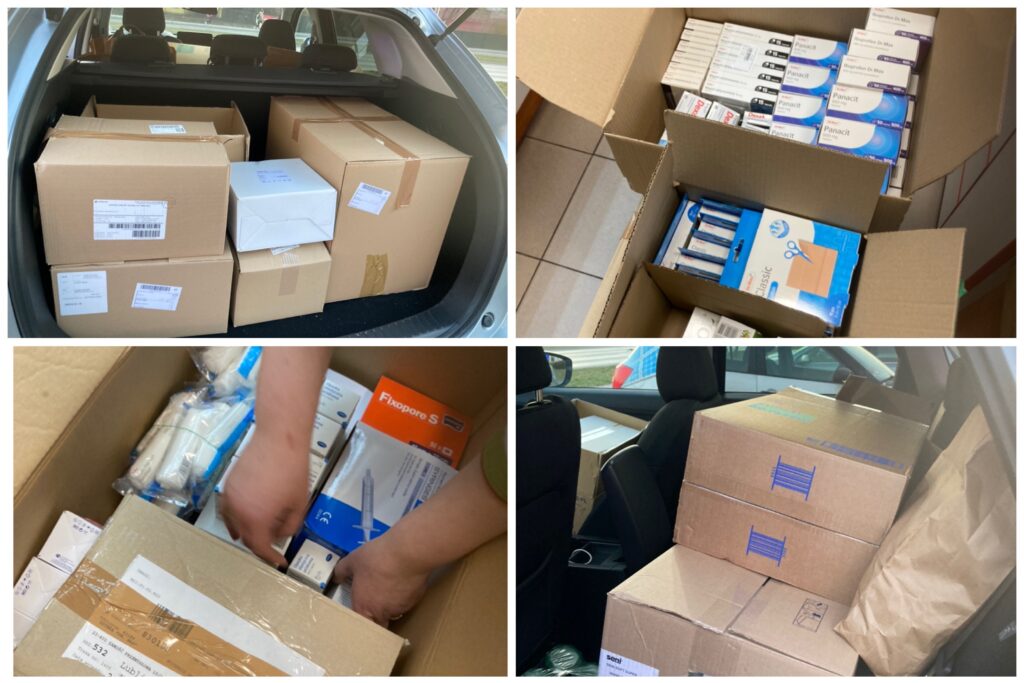
According to Toomas, the organised supply chains to the areas in need on the Ukrainian side are very efficient. “Ukraine right now is an excellent example of a citizen community where everyone is helping out, everything necessary for survival gets organised very fast and according to the needs of the cut-off regions,” he says.
He adds that the level of cooperation and cleverness within Ukraine itself, where all the local volunteers and organisations are working together tirelessly, is the sign of a truly European country with immovable values and a strong civil society.
Donating €25 may feed five families for a day
Please make no mistake – the Ukrainians are strong. They have been conveying the message that they are fighting for their freedom – and that they will win – to the whole world since the beginning of the war. They do not need pity from anyone, but they do need assistance to survive the humanitarian crisis that this atrocious “special operation” and “denazification” of Russian president Vladimir Putin has brought upon it.
We cannot get tired of helping Ukraine. Even if the war might end tomorrow, the humanitarian catastrophe will be imminent for months to come. Ukraine has a population of 44 million, of which 3.5 million have fled outside the country and around six million are currently displaced or refugees within their own country. There is essentially no person in Ukraine whose life has not been affected by the war. “Help is needed even in the quietest areas that have been hit only by a few missiles or not at all,” my friend Toomas notes.
As a simple example, donating €25 might mean that up to five Ukrainian families will be fed for one day. In a peaceful and wealthy country, it might mean skipping buying a few drinks or a new t-shirt. It is crucial that all of Europe – and hopefully the rest of the world, too – does not get tired of the war and will not stop helping out.
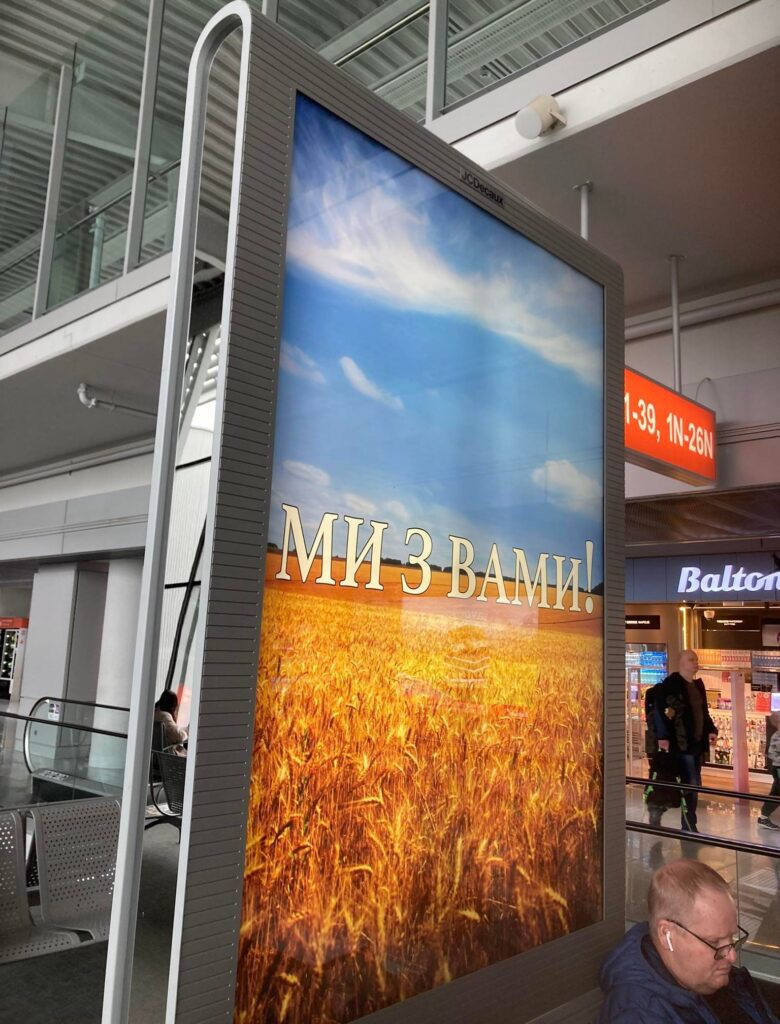
What stuck with me most was when an elderly Polish gentleman who happened to speak German, told me: “During peaceful times, people might think the Polish are a bit xenophobic or the Estonians are quite reserved. Right now, we need to act according to our heart – and fight and help wherever we can, because we know what it is like!” For the Baltic states and Poland, the Russian acts of terror in Ukraine is sadly just history repeating itself.
Read also: Live updates: Russia’s invasion of Ukraine – reactions in Estonia.

